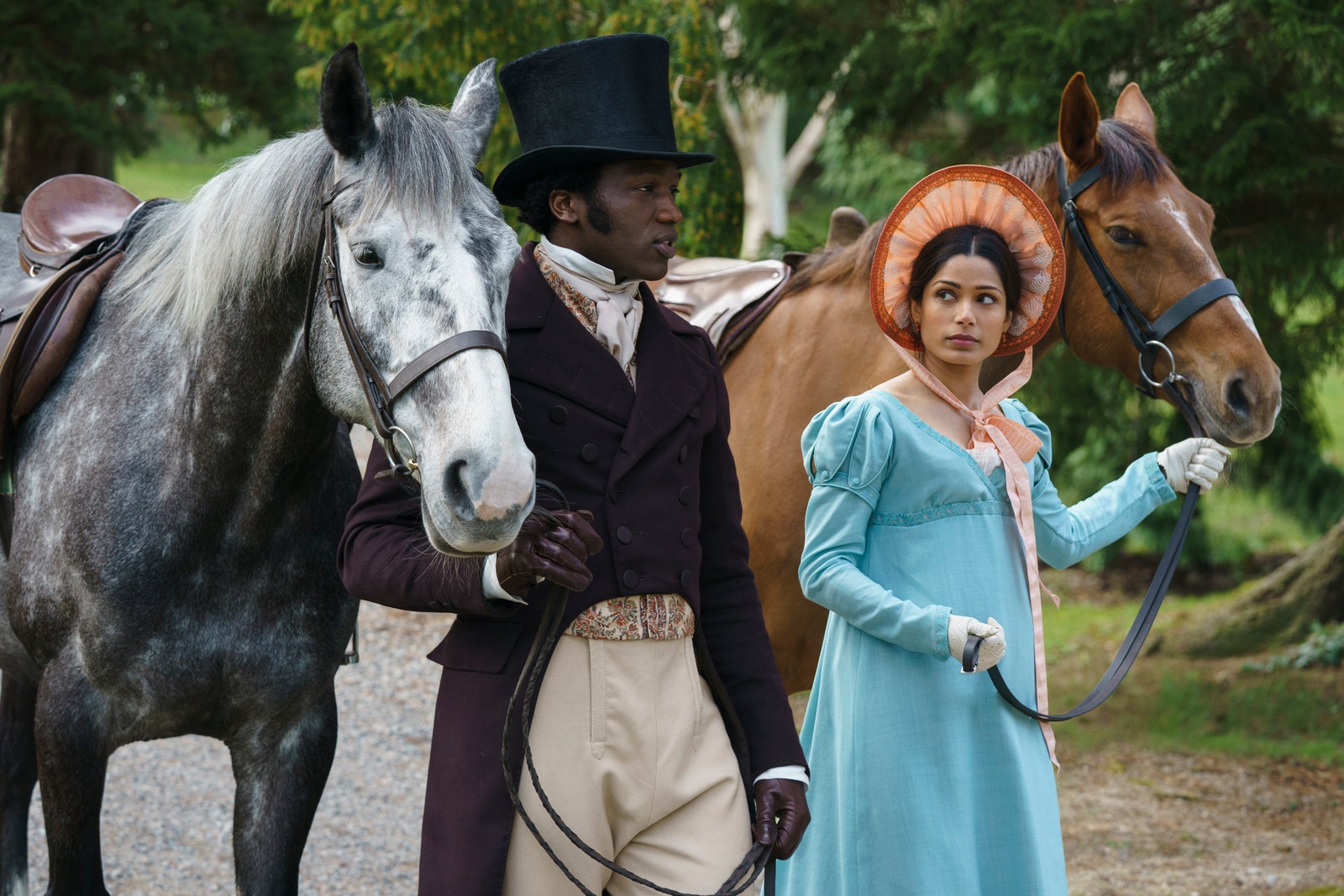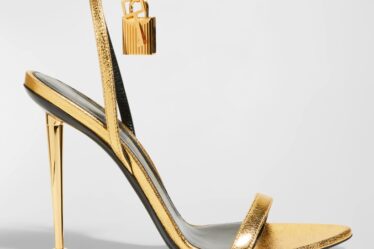
While prepping Mr. Malcolm’s List, she saw Hamilton on Broadway and was blown away by the musical’s inclusive cast. Jones decided she wanted to do the same on her film. As a result, both the short film (shot in 2018 and released in 2019) and the final feature are composed largely of actors of color, much like Netflix’s Bridgerton (which Mr. Malcolm’s List predates).
That was partly what drew Dìrísù, who is British Nigerian, to the film. Previously, the actor hadn’t cared much for period dramas of this era, nor had he gotten opportunities to star in them. “There were no stories of color being told in those films,” he says. “Many young, white British actors would leave drama school and get a period drama, and that would be their route to success.” That wasn’t the case for Dìrísù, who went on to star in shows like Gangs of London and movies like His House.
However, he connected with the script for Mr. Malcolm’s List, finding it a funny, interesting departure from other work he was being offered. Jones knew the moment she met him that she had found “the new Mr. Darcy.”
“I never wavered,” she says of casting Dìrísù. “It’s him, or we don’t make the film. It’s the best decision I ever made. He’s handsome, he’s talented, he’s gentle, he’s complex.”
Once cast, Dìrísù got to work nailing his character’s accent, fixing his posture, and finding ways he could inhabit the role on a deeper level, like convincing Jones to include a scene in which Mr. Malcolm speaks Yoruba. “I was conscious of not color-washing the story,” Dìrísù says. “I didn’t want this to just be a white character played by a person of color. I wanted him to feel like a real, lived-in person.”



